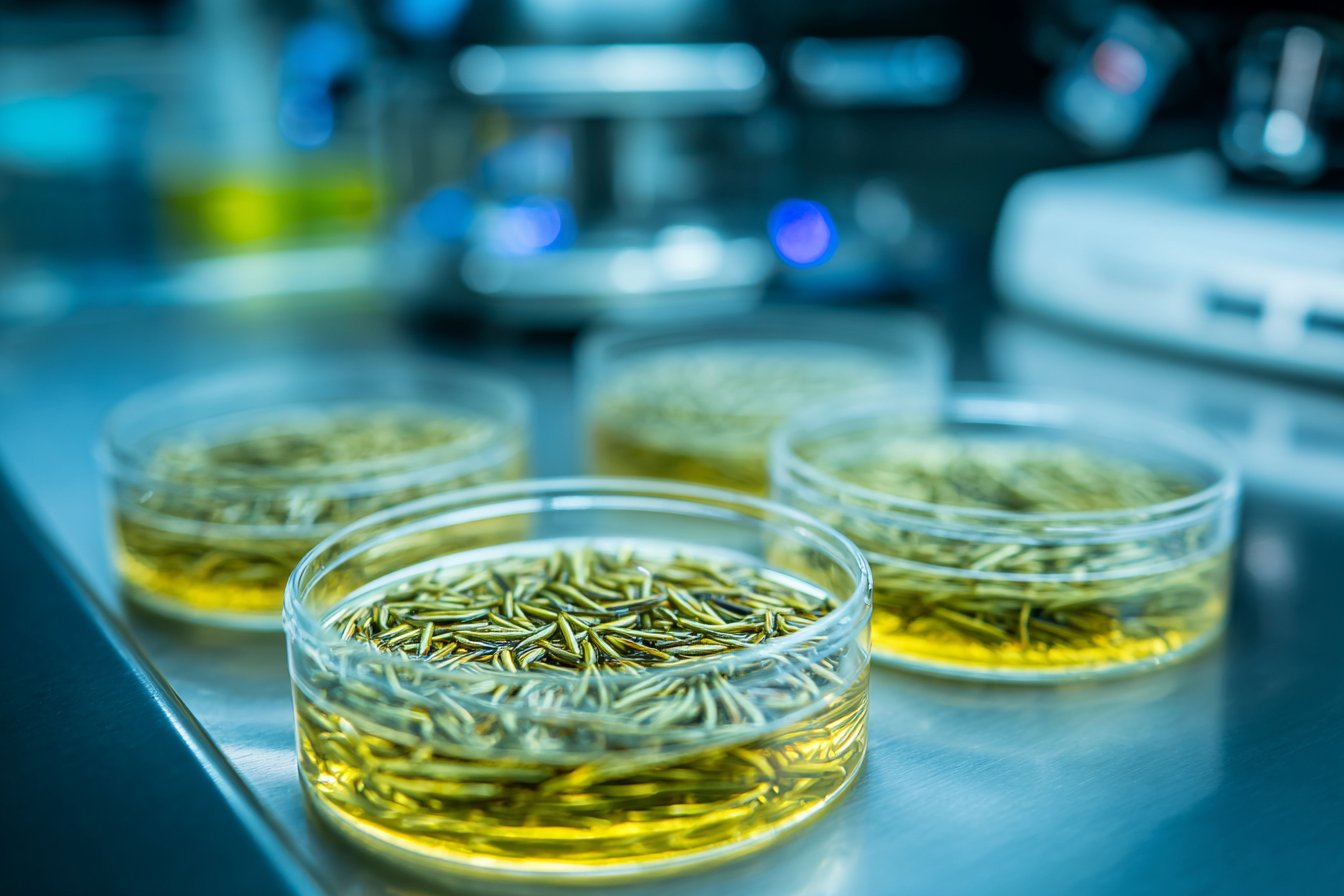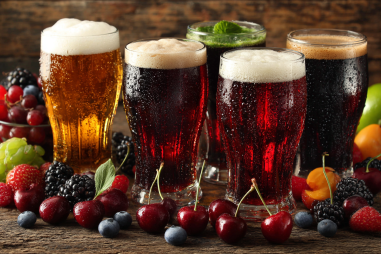When it comes to crafting wild beers, American brewers are riding a wave of creativity powered by microbes—especially wild yeast strains native to this diverse continent. These tiny organisms work quietly but incredibly hard behind the scenes, transforming simple sugars into complex and exciting flavors that traditional yeast can’t replicate. Wild fermentation taps into the mysterious world of spontaneous and intentionally cultured microbes, and in the United States, this practice has blossomed into an innovative craft movement. Whether you’re a homebrewer curious about wild yeast or a beer enthusiast wanting to understand what makes wild beers so distinct, let’s explore the fascinating microbes shaping this unique beer category.
The Role of Yeast and Other Microbes in Wild Beer
Yeast is essential to beer brewing because it consumes fermentable sugars, producing alcohol and carbon dioxide. While most beers rely on well-defined strains of Saccharomyces cerevisiae or Saccharomyces pastorianus, wild beers lean on a mix of wild yeasts and bacteria. These include non-traditional yeast species and lactic acid bacteria that occur naturally in the environment or are cultivated from various sources.
In wild beer fermentation, microbes often work together or sequentially, creating complex fermentation profiles. Some microbes dominate early fermentation with rapid sugar metabolism, while others rise later, contributing acids, phenolics, and funkiness—flavors often described as sour, earthy, or barnyard-like. This microbial diversity means every batch of wild beer can be truly unique and expressive of its terroir—the local environment and microbial population.
Common Wild Yeast Strains Used in American Brewing
American brewers have embraced several wild yeast strains native or well-adapted to their regional ecosystems. Some of the most prominent include:
- Brettanomyces: Often called “Brett,” this genus of yeast is famous for its funky, fruity, and earthy aromas. Species like Brettanomyces bruxellensis and Brettanomyces claussenii are popular for creating complex flavors ranging from pineapple and tropical fruit to horse blanket and leather.
- Wild Saccharomyces strains: Many wild beers feature strains of Saccharomyces cerevisiae isolated from nature, often with unique fermentation kinetics and flavor contributions that differ from commercial lab strains.
- Non-Saccharomyces yeasts: Other wild yeasts such as Pichia, Torulaspora, and Candida species may be present. These yeasts tend to produce exotic aromas, contribute acidity, or induce complex mouthfeel characteristics.
In addition to yeasts, bacteria like Lactobacillus and Pediococcus are integral to many American wild beers, especially sour styles, adding tartness and depth.
Benefits and Challenges of Various Wild Yeast Strains
Wild yeasts bring remarkable benefits to brewers wanting distinctiveness and complexity:
- Unique flavor profiles: Many wild strains create aromas and flavors impossible to achieve with standard brewing yeasts, ranging from fruity esters to funky “barnyard” characteristics.
- Enhanced complexity: Mixed fermentations involving multiple microbes lead to layers of flavor and texture over time, making the experience dynamic.
- Natural preservation: Some wild yeasts and bacteria produce acids and compounds that improve a beer’s shelf life and stability.
However, wild yeast strains also present challenges:
- Unpredictability: Wild strains often have slower or less consistent fermentation behavior, making batch control difficult.
- Contamination risks: Introducing wild yeast into a brewery carries the risk of contaminating other beers with funky microbes.
- Extended fermentation times: Many wild strains ferment more slowly, requiring patience and space in the fermenter.
Understanding these factors is key to successfully harnessing wild yeast in brewing.
Impact on Flavor and Fermentation Characteristics
The flavor impact of American wild beer yeast strains is nothing short of transformative. Unlike conventional yeasts that produce clean, predictable profiles, wild yeasts unleash a spectrum of sensory delights. The fermentation characteristics are equally varied:
- Brettanomyces yeasts often ferment complex sugars that traditional yeasts cannot, resulting in dryer beers with residual earthy or barnyard notes. They contribute volatile phenols that add depth and funkiness.
- Wild Saccharomyces strains can produce bold fruit esters, spicy phenols, or subtle earthy tones depending on the strain and fermentation conditions.
- Mixed culture fermentations with bacteria generate lactic acid, giving American wild sours their signature tartness and refreshing bite.
The interplay between these microbes can result in beers that are vibrant, layered, and capable of evolving with aging. The mouthfeel can vary from crisp and effervescent to creamy and smooth, often with intriguing carbonation dynamics from mixed fermentation.
How to Cultivate and Manage Wild Yeast
Cultivating wild yeast involves sourcing and nurturing native microbes and understanding their habits:
- Harvesting wild yeast: Brewers often capture wild strains from fruits, flowers, oak barrels, or the open air. Techniques include exposing cooled wort to the environment to naturally inoculate it with airborne yeast.
- Isolating strains: Lab techniques help isolate and identify promising wild strains for reuse.
- Creating pure cultures: Some brewers cultivate pure wild yeast cultures in controlled conditions to ensure predictable fermentations.
Managing wild yeast requires patience, cleanliness, and attention to fermentation dynamics. Many American breweries maintain dedicated fermenters or spaces to avoid cross-contaminating clean beers. Controlling fermentation temperature, oxygen exposure, and nutrient levels all influence wild yeast performance and flavor outcomes.
The Future of Wild Beer Yeast Research in America
The frontier of wild yeast research is vibrant and promising. American scientists and brewers are teaming up to better understand the genetics, physiology, and flavor chemistry of these microbes. Exciting trends include:
- Bioprospecting: Exploring native American environments for undiscovered yeast strains with novel properties.
- Genomic sequencing: Using advanced DNA sequencing to characterize yeast and bacterial genomes, enabling strain engineering or improved culture maintenance.
- Microbial consortia design: Developing tailored mixed cultures that balance funk, acidity, and fermentation efficiency to craft consistent but complex beers.
- Sustainability: Leveraging wild yeast for more natural, low-intervention brewing processes that reduce additives and processing.
These innovations will likely expand the boundaries of what wild beer can be, further highlighting the microbial magic at the heart of American craft brewing.
Embracing Microbial Creativity in American Wild Beers
American wild beer yeast strains are much more than just fermenters; they are the creative partners that inspire brewers to push flavor frontiers. Through their unique aromas, fermentation quirks, and textural effects, these microbes turn ordinary ingredients into extraordinary experiences. Whether captured from nature or carefully cultivated, wild yeasts embody a spirit of experimentation and place that resonates deeply with craft beer lovers.
For anyone venturing into the world of wild beers, understanding and respecting the microbes behind the magic is essential. From funky, fruity Brettanomyces to tart lactic bacteria, the microbial cast brings complexity, challenge, and ultimately, the unique character that defines American wild brewing.







